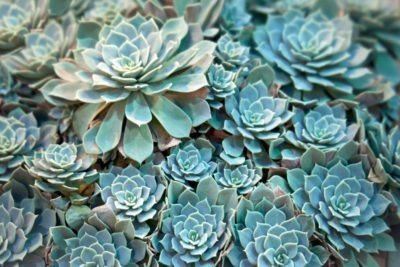If your succulent recently produced a beautiful bloom before dying, it is possible that you have a monocarpic succulent. Learn more about this type of plant and how to care for them in this post!
When you buy something through links on this site, we may get a commission from your purchase. This commission does not add any extra cost to you, but it helps us provide more free content that you can enjoy.
I understand that the word “monocarpic” may appear intimidating, however, it is really not! What does it mean? A monocarpic succulent is a type of plant that blooms only once before it dies.
I was not aware that other succulents, like Agaves, die after they bloom until I recently experienced it.
Recently, I have been planting a variety of Sempervivums in my outdoor space. Not long ago, I observed that a few of them had started to bloom.
I was intrigued to observe the appearance of Semps’ flowers. Although I’m not particularly fond of succulent blooms, I found it captivating to notice the differences between them. It turns out that Semps possess a distinct look to their blossoms.
Shortly after the flowers reached full bloom, I noticed that the main stem of the plant was discoloring to a shade of black. Since they are in the shade, I knew it was not caused by sunburn. I did not think it was due to overwatering as I only water them once a week and the soil is typically quite dry by the next time I water them.
I looked into the matter.
I finally understood why only the flowering Sempervivums were dying off; it was due to their monocarpic nature. Yet, the remainder of the plants were in very good condition.
I learned that Sempervivums and other monocarpic succulents tend to produce a lot of “pup” plants before they bloom. My Sempervivums were full of little chicks, so that by the time they reached blooming stage, they had already produced enough new plants to replace themselves. This allows them to go out with a bang, producing a beautiful (or sometimes not-so-beautiful) flower as their last act.
It’s a possibility that this is the reason your succulents have died, although it may not be the primary cause. I myself had a Sempervivum that went through the same thing, and I even received an email from a reader with photos of their own Sempervivum shortly after. So it’s likely that some of you have gone through this or will soon.
If you’ve encountered any monocarpic succulents, please share your experience in the comments below! As of now, I’m aware that Sempervivums, some Agaves, and some Aeoniums are monocarpic, but I’m not sure about any others. It’s no surprise that Agaves die after they flower, considering their large and magnificent plumes, which can easily reach several feet in height. It’s a sight so remarkable that it reminds me of Dr. Seuss books!
Table of Contents
FAQ
What is the difference between polycarpic and monocarpic plants?
Monocarpic plants are those that bloom and bear fruit once in their lifetime, while polycarpic plants bloom and fruit multiple times or annually. Most polycarpic plants are biennial or perennial, while only a few monocarpic plants are perennial.
What are monocarpic and polycarpic succulents?
Polycarpic succulents have the ability to flower and reproduce multiple times, whereas monocarpic succulents only bloom and reproduce once in their lifetime.
Which plant blooms once and then dies?
Botanists report that a century plant’s main stalk can grow up to 30 feet tall near the end of its life. As it is a “monocarpic” species, the century plant only blooms once before it passes away.
How do you know if your succulent has a death bloom?
A succulent death bloom is typically characterized by having only one stalk, which is long and stretches up from the center of the plant. If you notice stems coming from other parts of the succulent, such as the layers of an Echeveria, it is a normal flower.
Which plants are monocarpic?
Monocot plant families with monocarpic species include Agavaceae, Araceae, Arecaceae, Bromeliaceae, Musaceae, and Poaceae, while dicot families with monocarpic species are Acanthaceae, Apocynaceae, Asteraceae, and Fabaceae.

